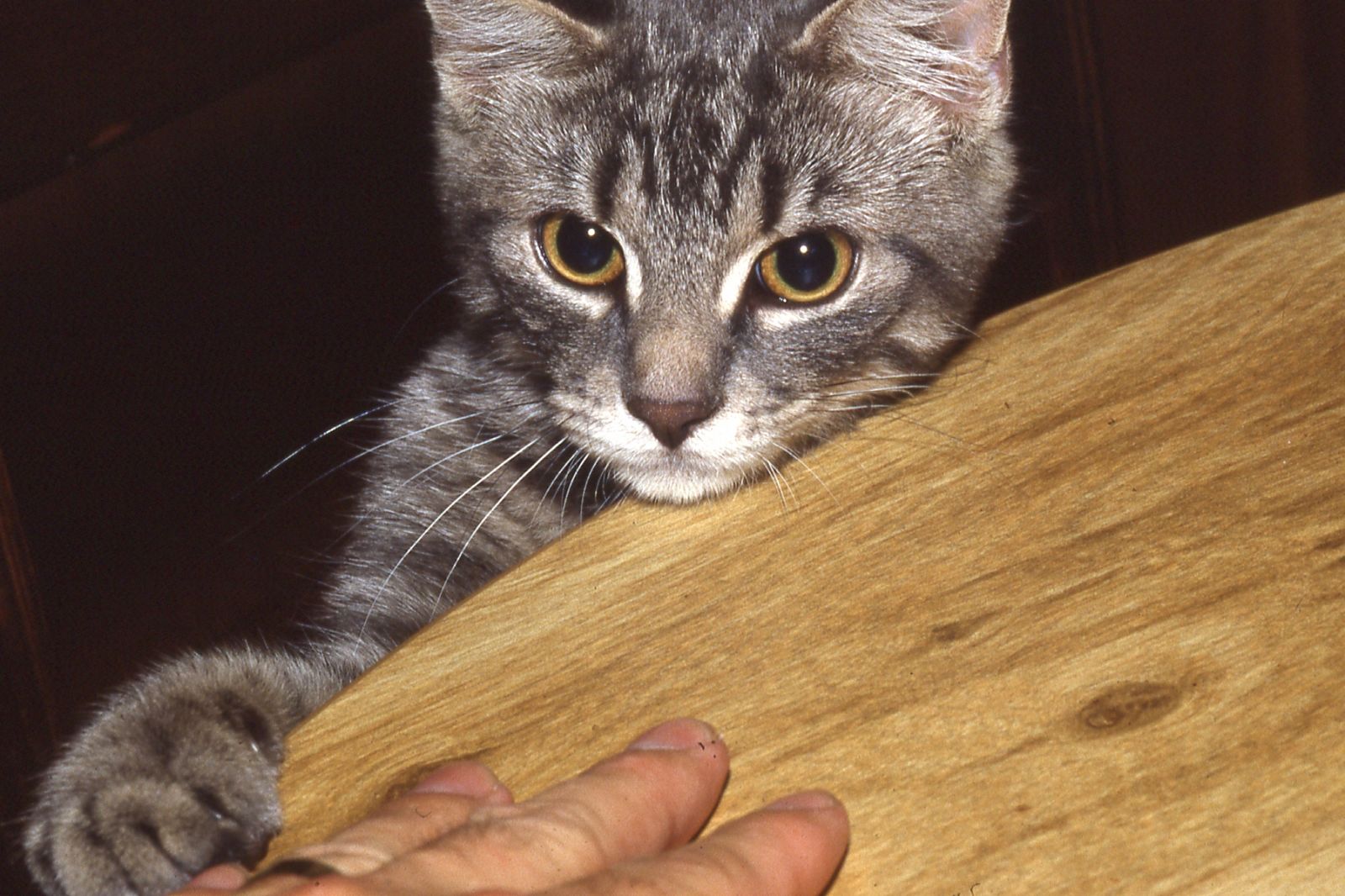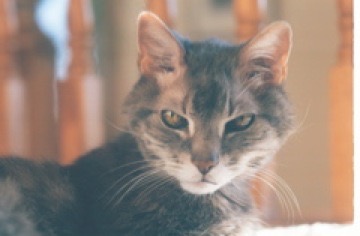
John Kerr and Mary Visser Kerr with their cats Thatcher (left) and Miss Pebbles (right)
John Kerr and Mary Visser Kerr didn’t expect to stumble upon a litter of five newborn kittens on a spring afternoon in early May 1984.
The kittens, who belonged to a feral cat, were only a couple of weeks old when John found them while cleaning out the shed in the backyard of his Brampton home. John and Mary cared for the kittens over the course of the following few weeks – leaving out food and water, but were careful not to get too close for fear their mother would abandon them. There was however, a little grey Tabby kitten that stuck to John like glue. The Kerrs vividly remember the night they officially welcomed Critter into their family.

“It was a dark and stormy night over the May long weekend. The mom cat took all of her kittens away except for one – she left Critter. We think she sensed Critter had found a home with us. We always say that Critter chose us,” John reflects.
Critter quickly became part of the Kerr family. He was a friendly, lovable cat that was very perceptive and aware of his surroundings.
In 1996, when Critter was 12, Mary and John noticed something was drastically wrong with him. Critter was diagnosed with a suspected thymoma (a potentially cancerous tumour of the thymus gland located in the chest), and surgical intervention became the only option to save his life.
Critter’s case was presented to Dr. Shane Bateman, who at the time, was a second year emergency and critical care resident in the Intensive Care Unit (ICU) at the Ontario Veterinary College and the first resident to complete a formal residency in emergency and critical care in Canada. Bateman chose to do his residency at OVC in order to work alongside Dr. Karol Mathews, a renowned researcher, clinician and OVC faculty member responsible for developing pain management guidelines for animals that have influenced veterinary care around the globe. Mathews was one of the first researchers at OVC to receive Pet Trust funding for her work.
Like so many others over the years, Critter received a life-saving surgery at OVC that resulted in extending his life until the age of 19.
“Critter’s case was unique because he had an unusual presentation of symptoms (not being able to jump),” Bateman remembers. “Thymomas in cats are very uncommon; the Kerrs were very observant and recognized there was a problem right away.”
When having to make life and death decisions for a pet, the relationship between pet owners and veterinary caregivers is so important and is at the very heart of OVC Pet Trust. Today as Bateman flips through Critter’s old medical records, the importance and meaning of that relationship is clearly demonstrated. He recalls receiving a photograph in the mail from the Kerrs after Critter’s death in 2003. Mary was able to track Bateman down in the United States, where he’d accepted a position at Ohio State University after completing his residency at OVC. He refers to the picture of Critter as one of the best patient photographs he has ever received and he still keeps a copy in his office today.

Photograph of Critter sent to Dr. Shane Bateman
Since Critter was treated by Bateman, OVC and Pet Trust have been special parts of Mary and John’s lives. In addition to OVC staff performing life-saving surgery on Critter, the Kerrs have been supporters of Pet Trust since it started. In their pet records they kept a personal letter from 1987 addressed from then Dean of OVC, Dr. Ole Nielsen thanking them for their support.
“There was always something about Critter – he seemed to understand feelings and emotions. He was a great comfort at different times in our lives,” Mary remembers, fondly.
Critter lived a longer life because of the surgery he underwent at OVC. “Critter could not have landed in a better place to receive the attention and care he got. We were so lucky to have Shane Bateman and OVC to save our Critter,” John says.
As a faculty member at the University of Guelph since 2014, educating the next generation of veterinary leaders is a large part of Bateman’s job. He is very involved in teaching emergency and critical care to Doctor of Veterinary Medicine students in their final year of study, Doctor of Veterinary Science students, interns and residents. He also oversees and manages any patients admitted to the ICU at the OVC Health Sciences Centre.
“Cases like Critter’s allow us [clinicians, researchers] to learn, grow and innovate,” Bateman emphasizes, smiling. “I’ll be forever grateful for being given the opportunity to treat and learn from such a special cat.”

